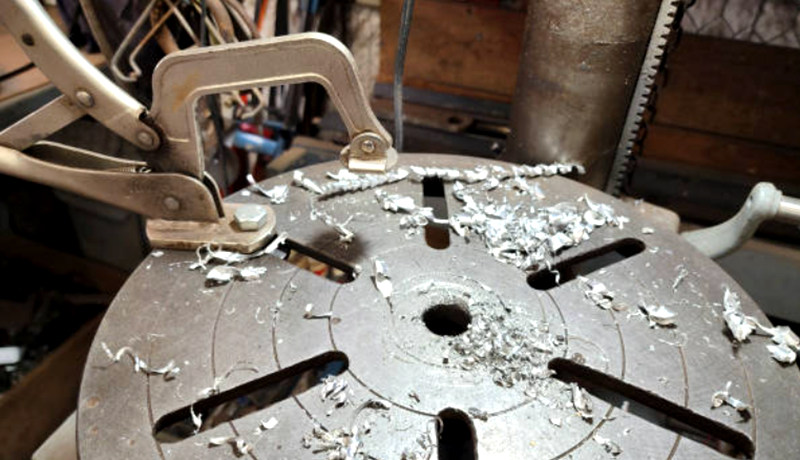Some Measures You Might Need To Solve Problems During The Die-casting Machine Production
LK Die Casting Machine / 2024-12-06 17:49:36
Die-casting machines are mechanical equipment that obtain metal castings by injecting molten metal (such as aluminum, zinc, magnesium, etc.) into the mold cavity under high pressure and cooling and solidifying it. They are the core equipment of the die-casting process. This article will provide you with some problems and solutions that may be encountered in die-casting production through some real cases of some customers.
1) Peeling phenomenon of aluminum alloy die-castings
Peeling of aluminum alloy die-casting refers to the peeling or stratification phenomenon on the surface of the casting, which is usually manifested as the peeling of the surface coating or metal layer of the aluminum alloy. This problem not only affects the appearance of aluminum alloy die-castings, but may also cause the performance of the product to deteriorate, and even affect its subsequent processing and use.
Improper aluminum alloy composition:
The content of certain elements (such as silicon, magnesium, etc.) in the alloy is not appropriate, or the impurity content in the alloy is too high, which may cause the aluminum alloy to form a brittle surface layer during the casting process and easily peel off. Therefore, it is necessary to select suitable aluminum alloy materials to ensure that their composition is stable and does not contain too many impurities.
Casting temperature:
Too high: The temperature of the molten metal is too high, and an oxide film or other undesirable structures may appear on the surface of the casting, resulting in poor adhesion of the casting surface and more likely to peel off.
Too low: The temperature of the molten metal is too low, and the metal fluidity is poor, which easily leads to uneven or fragile oxide layers on the surface of the casting, resulting in peeling.
Therefore, it is necessary to ensure that the temperature of the molten metal and the mold is within the appropriate range to avoid peeling problems caused by too high or too low temperatures.
Oxidation of aluminum alloy:
Aluminum alloys are easy to oxidize, especially during high-temperature smelting, and an oxide film is easily formed on the surface of the aluminum alloy. If the oxide film is not effectively removed during the die-casting process, peeling may occur on the surface of the casting, affecting the appearance and performance. Therefore, during the smelting and die-casting processes, the control of the oxide film should be strengthened to prevent the oxide film from interfering with the contact between the metal and the mold.
2) How to solve the flash problem of aluminum alloy die castings?
The flash of aluminum alloy die castings refers to the excess metal layer or edge of aluminum alloy formed when the molten metal overflows from the gap of the mold in the die gap, the mold is not completely closed, or the casting pressure is too high during the die casting process.

Flash is one of the common defects of die castings, especially in the die-casting process of complex shapes or multi-cavity molds, the incidence of flash is high. Flash will affect the appearance of the casting, its dimensional accuracy, and the quality of subsequent processing. Therefore, it is necessary to effectively control it during the die-casting process. The following are some effective control measures:
Mold design:
In the process of aluminum alloy die casting, if the mold is not closed tightly, the molten metal will overflow from the gap of the mold under high pressure to form a flash. Ensure that the parting surface of the mold is properly designed and the position of the parting line is reasonable to reduce the generation of flash. At the same time, check whether the mold is worn or damaged, and repair it if necessary or worse.
Injection parameters:
Too high injection pressure may cause the metal flow rate to be too fast, exceeding the mold's capacity, and the metal liquid will overflow from the gap of the mold, resulting in a flash. The injection speed and pressure can be adjusted so that the molten metal can evenly fill the mold cavity and avoid the formation of a flash due to high-speed injection or inappropriate pressure.
Mold temperature:
Control the mold temperature within the appropriate range. Overheating or overcooling of the mold may cause a flash.
Ejector mechanism:
Check whether the ejector pin or ejector cylinder is set correctly to ensure that the product will not produce a flash due to excessive or uneven ejection force when demolding.
Liquid metal fluidity:
If the aluminum alloy melt is too fluid and the flow rate is too fast, it may also cause the molten metal to overflow the mold gap and form a flash. The flash can be reduced by improving the fluidity of the molten metal to ensure that the molten metal can smoothly fill the mold cavity, or by adjusting the alloy composition, increasing the melting temperature, or using an alloy with better fluidity.
Post-processing:
Perform appropriate post-processing on the die casting, such as trimming or deburring to remove the flash.
If you have other questions about the die-casting machines, please feel free to contact our engineers. We are glad to help you solve your machine problems.
OTHER CONTENT
-

2024-09-19 14:16:15 LK Cold Chamber Die Casting Machine DCC900 Locking Force: 9000KN Die Height: 400-1000mm Space Between Tie Bars: 930x930mm Shot Weight: 13.5Kg Casting Area Max:2250c㎡
More -

2024-09-19 14:11:06 LK Cold Chamber Die Casting Machine DCC280 Locking Force: 2800KN Die Height: 250-650mm Space Between Tie Bars: 560x560mm Shot Weight: 2.9Kg Casting Area Max:700c㎡
More -

2024-09-19 10:23:07 LK Cold Chamber Die Casting Machine DCC580 Locking Force: 5000KN Die Heigh: 350-850mm Space Between Tie Bars: 760x760mm Shot Weight: 6.9Kg Casting Area Max:1250c㎡
More -

2024-09-19 10:11:20 LK Cold Chamber Die Casting Machine DCC400 Locking Force: 4000KN Die Height: 300-700mm Space Between Tie Bars: 669x669mm Shot Weight: 4.7Kg Casting Area Max:1000c㎡
More

